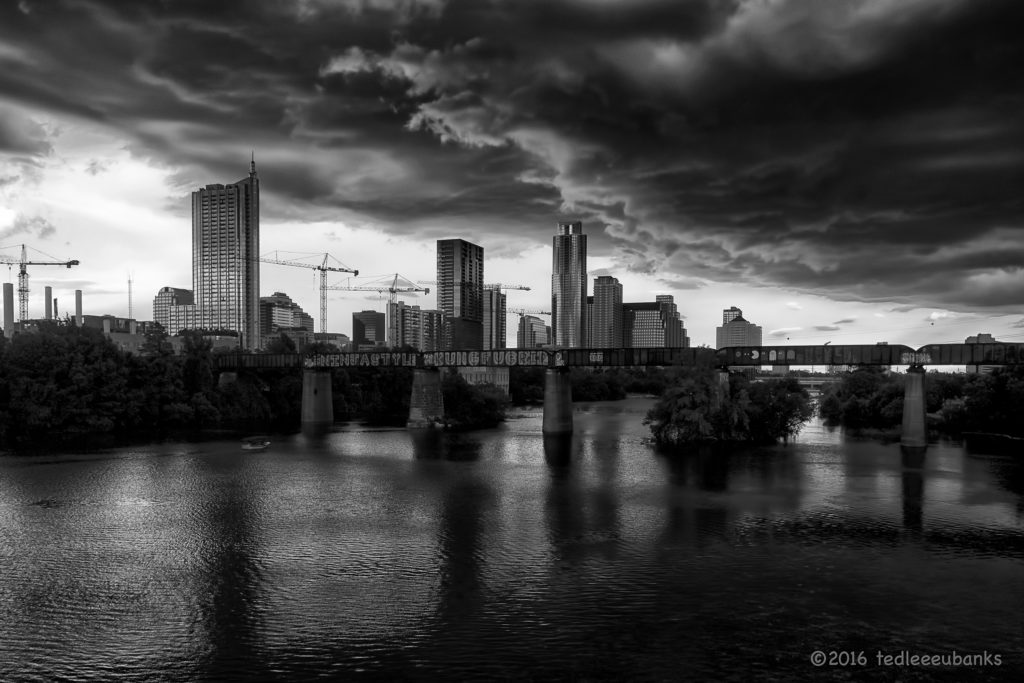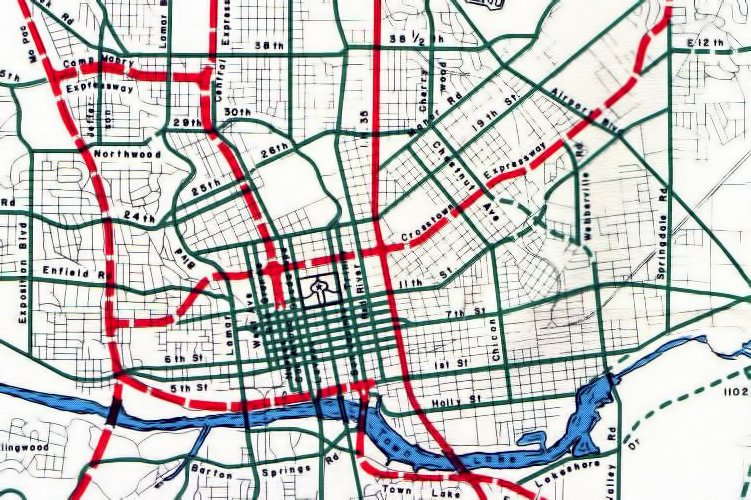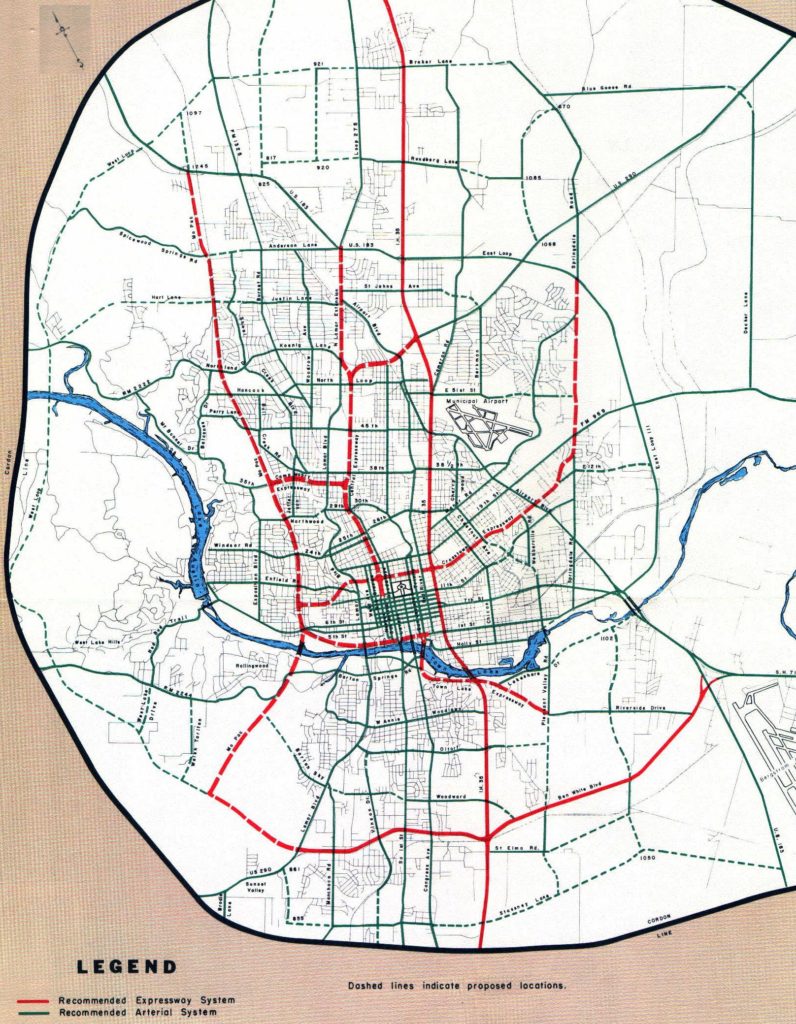
George Santayana wrote (in The Life of Reason, 1905) the following oft-repeated and now hackneyed phrase:
Those who cannot remember the past are condemned to repeat it.
In the case I am about to describe, Santayana is right as well as prescient. Above is a map of proposed freeways from the Austin Transportation Plan, 1962-1982. Look closely at the proposed Crosstown Expressway. That freeway would have taken most of the remaining Clarksville homes that Mopac didn’t destroy (Mopac eventually wiped out 64 out of 168 black-owned Clarksville homes). Clarksville is the oldest remaining freedomtown in Austin; Clarksville is also the oldest remaining freedomtown west of the Mississippi.

The proposed expressway would have cut across the south entrance to Pease Park, obliterating that piece of the historic park. Texas Governor Elisha M. Pease and his wife donated the land for Pease Park to the city in 1875. The land remained undeveloped until the city and civic organizations cooperated to beautify the park in 1926. Many of the original improvements to the park were made by the Civilian Conservation Corps (CCC) during the Great Depression. All of this would have been sacrificed to a freeway.
The Crosstown Expressway died in 1976, a death attributable to civic action by Clarksville residents and their supporters. Clarksville residents took the city to court, got the neighborhood deleted from the freeway plans, and won state and federal historic designations for the neighborhood. Interestingly, the historic designations were opposed by the city’s Historic Landmark Commission.
Preservation without a narrative, without an interpretive context, is regulation.
I bring this to your attention not only as a history lesson. Our public lands are often eyed as blank spaces or voids ripe for reuse or redesignation. Austin’s Watershed Protection Department, in the recent past, considered Pease Park as a site for locating a massive inlet structure for a stormwater tunnel under Shoal Creek. Austin once considered building a city auditorium and then a parking garage in Republic Park, one of the four civic spaces included in Edwin Waller’s 1839 plan for Austin. Either would have obliterated that historic square.
Preservation should guide and aid the public in learning to embrace the past in a way that brings meaning to the present and illumination to the future.
Historic preservation isn’t just about saving old buildings. Many cities (Austin, in particular) focus on preserving structures and still lose their souls. Preservation without an overarching narrative or an interpretive context is often viewed by the public as intrusive regulation. Preservation should guide and aid the public in learning to embrace the past in a way that brings meaning to the present and illumination to the future.
